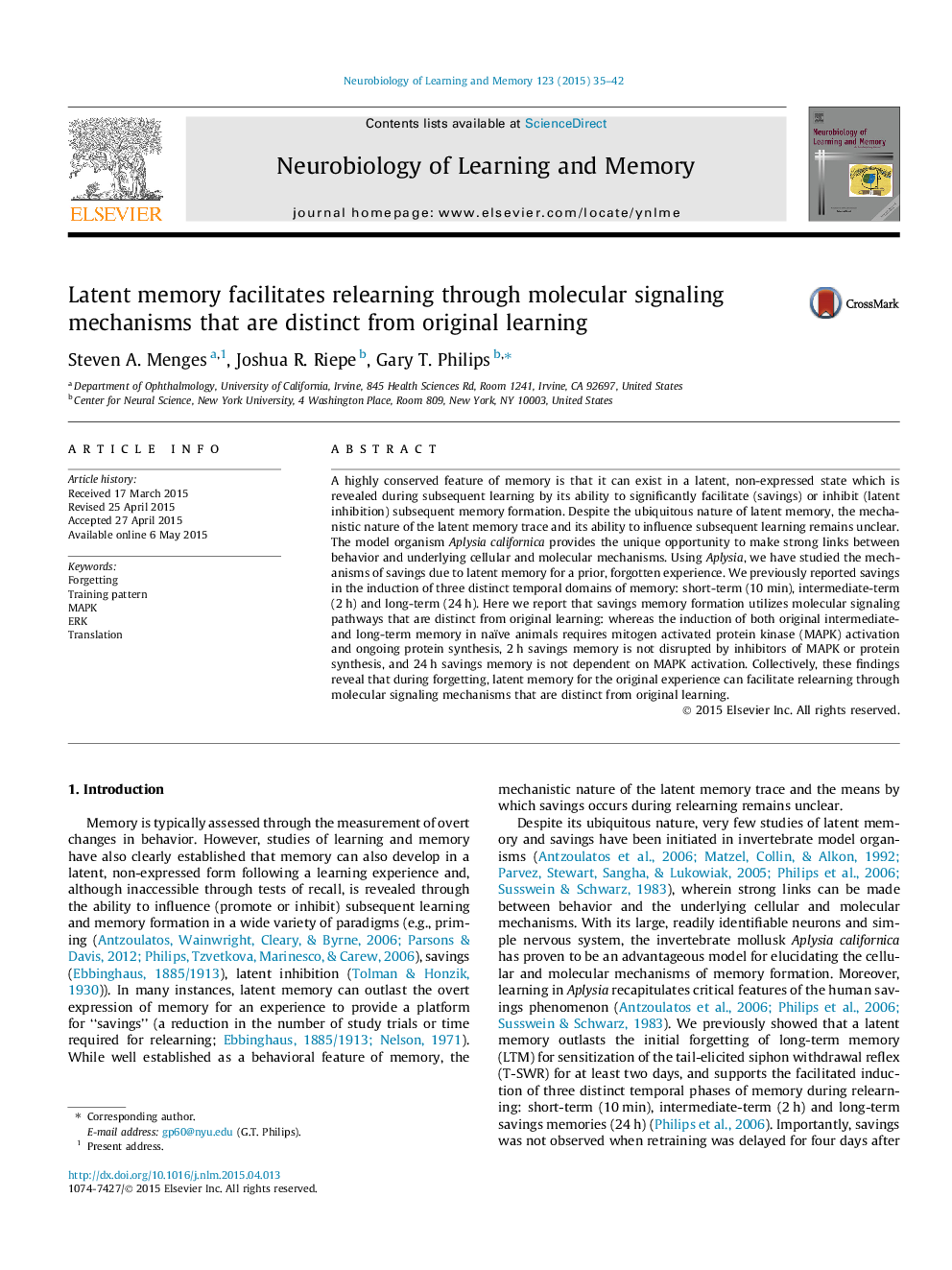| Article ID | Journal | Published Year | Pages | File Type |
|---|---|---|---|---|
| 936445 | Neurobiology of Learning and Memory | 2015 | 8 Pages |
•Latent memory supports savings in multiple temporal domains of memory formation.•Savings learning can be studied in a reduced behavioral preparation of Aplysia.•Savings learning mechanisms are distinct from original learning requirements.
A highly conserved feature of memory is that it can exist in a latent, non-expressed state which is revealed during subsequent learning by its ability to significantly facilitate (savings) or inhibit (latent inhibition) subsequent memory formation. Despite the ubiquitous nature of latent memory, the mechanistic nature of the latent memory trace and its ability to influence subsequent learning remains unclear. The model organism Aplysia californica provides the unique opportunity to make strong links between behavior and underlying cellular and molecular mechanisms. Using Aplysia, we have studied the mechanisms of savings due to latent memory for a prior, forgotten experience. We previously reported savings in the induction of three distinct temporal domains of memory: short-term (10 min), intermediate-term (2 h) and long-term (24 h). Here we report that savings memory formation utilizes molecular signaling pathways that are distinct from original learning: whereas the induction of both original intermediate- and long-term memory in naïve animals requires mitogen activated protein kinase (MAPK) activation and ongoing protein synthesis, 2 h savings memory is not disrupted by inhibitors of MAPK or protein synthesis, and 24 h savings memory is not dependent on MAPK activation. Collectively, these findings reveal that during forgetting, latent memory for the original experience can facilitate relearning through molecular signaling mechanisms that are distinct from original learning.
